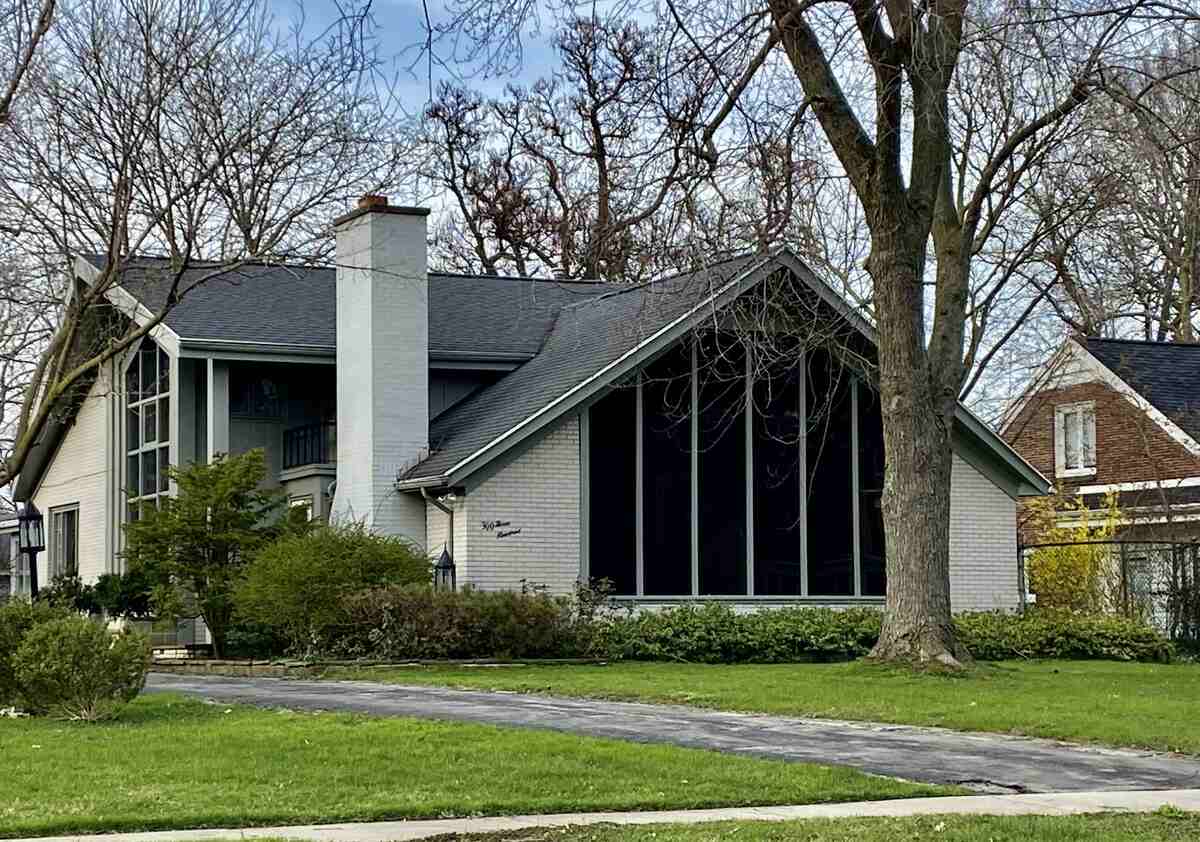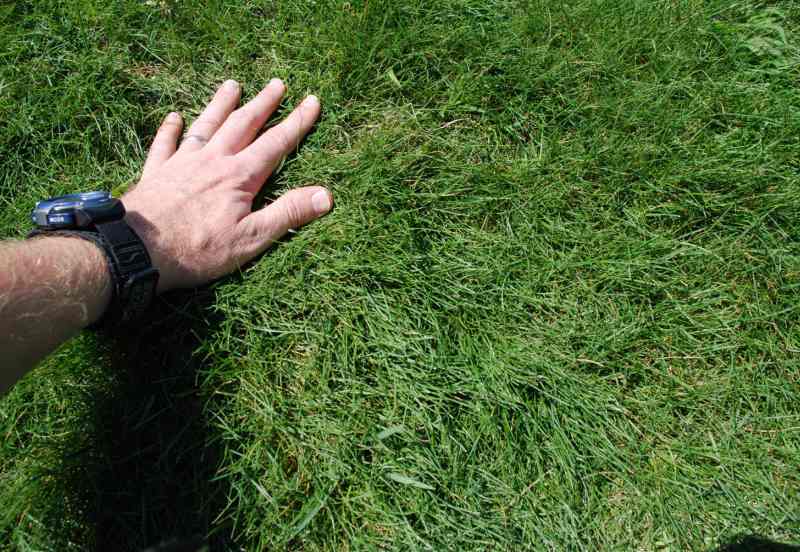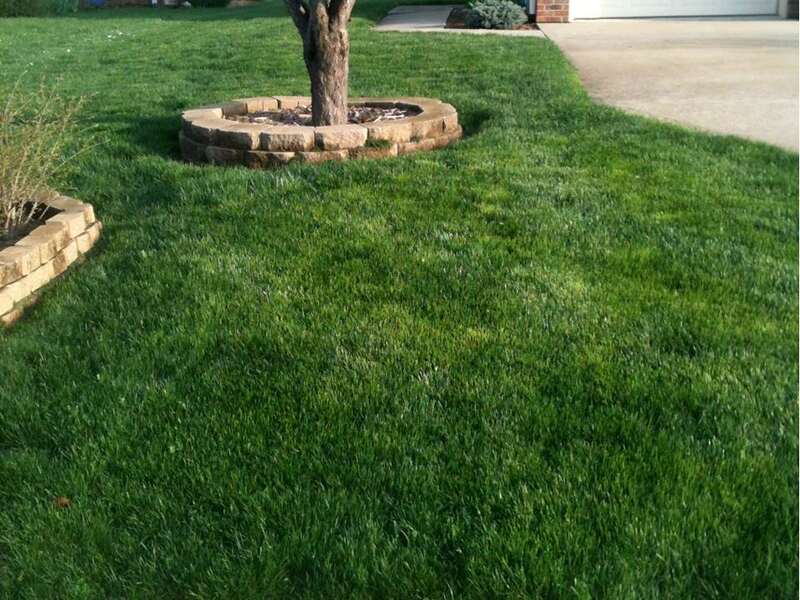
Our vast temperature changes can cause massive challenges to maintaining a healthy, green lawn, but you’ll have fewer problems if you choose one of the best grass types for Buffalo lawns.
The four best grass types for Buffalo are all cool-season grasses: fine fescue, tall fescue, Kentucky bluegrass, and perennial ryegrass.
Use this grass-growing guide to take your lawn to new and beautiful heights.
1. Fine Fescue

Phto Credit: Aaron J. Patton, Ph.D. / Turfgrass Extension Specialist at Purdue University
While everyone wants a lawn that receives plenty of daily sunlight, unfortunately for many homes, this simply cannot be the case. Many times, sections of a lawn may only receive 4-8 hours of daily sunlight. For a lawn such as this in Buffalo, fine fescue grasses may be the best solution for those shaded areas covering your yard. Fine fescues consist of some of the finest leafed grasses available to lawns, and their shade tolerance is almost unbeatable.
This category of grass includes creeping red fescue, chewings fescue, hard fescue, and sheep fescue grass. When choosing a seed mixture for scattering, ensure the mixture is 100% fine fescues for the best results. Fine fescue seeds grow in in about 21-50 days, one of the fastest growing rates outranking many bluegrasses, and require the lowest amount of fertilizing and care. It is highly recommended that these seeds are planted in the fall, however springtime months will also work.
Lawn mowing height: 1/4 to 1/2 inch
Grass Seed Options:
– Outsidepride Legacy Fine Fescue Grass Seed (5 lbs.)
– Eretz Creeping Red Fine Fescue Seed (choose your size)
– Outsidepride Creeping Red Fine Fescue Grass Seed (25 lbs.)
– Outsidepride Hard Fine Fescue Grass Seed (10 lbs.)
2. Tall Fescue

Photo Credit: Aaron J. Patton, Ph.D. / Turfgrass Extension Specialist at Purdue University
For homes in the Buffalo area that receive more sunlight than average, meaning anywhere from 6 to 8 hours of direct daily sunlight, a tall fescue blend may be a better, more beautiful option as well. Tall fescues are well known for their ability to adapt to cooler climates, and many tall fescues actually have a good shade tolerance as well, when compared with bluegrasses.
Varieties of tall fescues include darker green colors, with narrower blades, and cold, heat, drought and shade tolerances. Tall fescues require relatively low maintenance, so for a lawn that receives at least 6 to 8 hours of direct sunlight daily, these may be the best option. Try planting a 100% tall fescue blend between the months of September to November for best growing results, taking only 21 to 30 days to establish seedlings.
Lawn mowing height: 1/4 to 1/2 inch
Grass Seed Options:
– Triple-Play Tall Fescue Grass Seed Blend (5000 sq ft)
– Eretz Kentucky 31 K31 Tall Fescue Grass Seed (choose your size)
– Pennington The Rebels Tall Fescue Grass Seed Mix (7 lb.)
3. Kentucky Bluegrass

Photo Credit: Shutterstock
For those who take more pride in hands on maintenance of their lawns, Kentucky bluegrasses may be the perfect option. These grasses create lush, dark green lawns that are durable to wear and tear. However, Kentucky bluegrasses are notorious for having poor shade tolerance, so ensure your lawn receives at the very least 6 to 8 hours of daily sunlight. These grasses also take a long time to grow in, taking anywhere from 30 to 90 days to grow into seedlings.
For best results, try planting a mixture of 65% Kentucky bluegrass, 15% perennial rye grasses, and 20% fine fescues. Just as with the fescue grasses, plant this mixture between September and November. As a warning however, this grass mixture will require more work than other grasses, requiring more fertilizer and watering than just plain fescues in the area, but the hard work is absolutely worth the beauty.
Lawn mowing height: 1/4 to 1/2 inch
Grass Seed Options:
– Jonathan Green (11970) Blue Panther Kentucky Bluegrass Grass Seed (3 lbs.)
– SeedRanch Midnight Kentucky Bluegrass Seed (5 lbs.)
– Jacklin Seed – Biltmore Blue Blend – 100% Kentucky Bluegrass (5 lbs.)
4. Perennial Ryegrass

The last grass type recommended for the USDA hardiness zone 6a is the category of perennial ryegrasses. These grasses many times are used for overseeding, as they have the fastest growth rate out of the other cooler climate grass options, growing into seedlings in 14 to 21 days. Perennial rye grasses have surprisingly high tolerances for wear and tear, but can only withstand small amounts of shade, so make sure your lawn receives at least 6 to 8 hours of direct sunlight daily.
Lawn mowing height: 1/4 to 1/2 inch
Grass Seed Options:
– Outsidepride Perennial Ryegrass Seed (5 lbs.)
– Eretz ProTurf Perennial Ryegrass Fine Lawn Seed (choose your size)
Need help choosing the right grass type? Visit our Buffalo lawn care page to get in touch with a professional! In addition to Buffalo, we provide lawn care services to New York cities including Rochester, Albany, and Syracuse.
LawnStarter participates in the Amazon Services LLC Associates Program, an affiliate advertising program. LawnStarter earns revenue from products promoted in this article.
Main Photo Credit: Andre Carrotflower / Wikimedia Commons / CC BY-SA 4.0